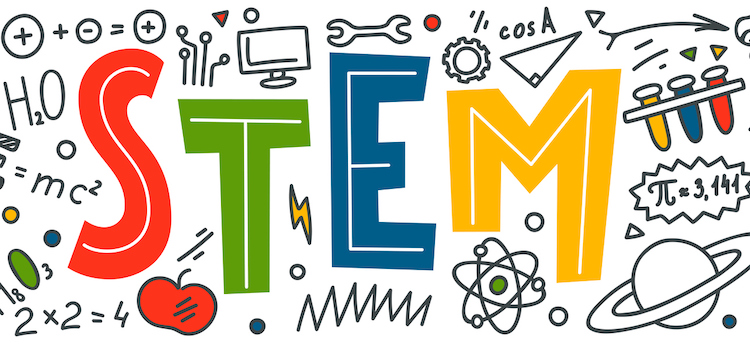Parenting(Age 5 to 8) | Academic | General | Parenting(Age 9 to 12) | Parenting(Age 13 to 16) | Jul 13, 2021
All About STEM Statistics

What is STEM?
In today's educational environment, the term "STEM Education" is frequently heard. STEM stands for science, technology, engineering, and mathematics, and covers all subjects that come under these four categories. There are dozens of different variants of STEM (including STEAM, STREAM, and METALS) because these things are never clear, but STEM is by far the most often used. The name comes from conversations in the United States regarding the shortage of skilled graduates for high-tech jobs. To solve this shortage, governments and institutions around the world have made encouraging students to STEM courses a top goal. If you have a bachelor's degree in a STEM and are seeking employment in that profession, it may be easier to immigrate to another country.
The Subjects Included in STEM
STEM stands for Science, Technology, Engineering, and Mathematics, even though it covers a much wider range of different subjects.
Other STEM courses you could take include are:-
➔ Aerospace engineering
➔ Astronomy
➔ Biochemistry
➔ Biology
➔ Chemical engineering
➔ Chemistry
➔ Civil engineering
➔ Computer science
➔ Electrical engineering
➔ Mathematics
➔ Mechanical engineering
➔ Physics
➔ Psychology
➔ Statistics
The whole list is much longer, but it gives you an idea of the breadth of areas covered by STEM. Some of these courses will provide a rather easy path to different occupations in terms of professional options. Aerospace engineering, for example, is likely to result in graduation employment with one of the world's most prestigious aerospace companies, such as Rolls Royce.
However, not every STEM-related graduate job is as straight forward. A STEM degree, for example, could lead to a job in Hollywood working on special effects, designing clothing, or reinventing the farming business. This is in addition to opportunities in banking and accounting, construction, telecommunications, and the energy sector.
Some Facts About STEM
STEM courses have traditionally been dominated by men, with young girls being discouraged from pursuing a technical professional path. Things were difficult earlier, but after implementing STEM, Universities, corporations, and governments have all implemented policies targeted at raising the number of women who choose to study in these fields and encouraging more students to pursue STEM degrees.
Only 3 percent of women in bachelor's degree programs go on to work in the STEM industry, even though 12 percent of women in bachelor's degree courses will graduate with a STEM degree each year. A salary gap exists between men and women in STEM because of the absence of gender balance. In 2013, the gender wage gap in STEM areas in Australia was 30.1 percent, according to the Australian Bureau of Statistics. (Source:-https://en.wikipedia.org/wiki/Women_in_STEM_fields)
To overcome this, the government and nonprofit organizations have launched initiatives aiming at increasing the number of young women pursuing STEM degrees and working in STEM-related industries. Girls Who Code, Engineer Girl, and Kode With Klossy are just a few amongst other initiatives emerging to encourage young women to pursue careers in STEM fields, with internships and other employment opportunities often made available exclusively for them.
When a student is ready to enter the workforce, they must have gained adequate knowledge to play a major role in our nation's STEM industries. For that, schools must have a sufficient number of STEM-trained teachers, and these topics should always be deemed in high demand. If you majored in a STEM profession or are transitioning from one, teachers who took a different path to teacher certification will have an edge in teaching in that field.
STEM Educational and Career Statistics for 2021
- STEM occupations will rise at a faster rate than non-STEM jobs between 2017 and 2029, with roles in computer, engineering, and advanced manufacturing leading the way.
- According to the Bureau of Labor Statistics, employment in software development is expected to expand by 22% between 2019 and 2029.
- According to a White House survey, only 20% of high school graduates are prepared for STEM degrees. This survey concluded that the United States has only produced 10% of the world's science and engineering graduates during the last 15 years.
- 74 percent of middle school girls want to be engineers,scientists, or mathematicians.
- According to a Code.org survey from 2020, fewer than half of US schools offer computer science courses. That raises the question of whether children will be prepared to meet the changing and expanding landscape of STEM careers.
- STEM represents a kid's future—the technological era in which they live, the best employment opportunities available to them, and the key to making appropriate decisions.
So, where do we go from here?
STEM is crucial as it is a powerful economic powerhouse. It opens doors to possibilities and we need to prepare a lot more individuals to take advantage of this opportunity. STEM should be the sport your child participates in, the show they watch, and the person they idolize. It is not the case that children lack the time or capacity to participate in STEM, rather, time must be restructured to accommodate it.
Many studies have verified that not only will this sector include the majority of our future jobs, but that many new professions will be generated in these areas as well. It is important to acknowledge that STEM fields have an equal impact on all other fields, including the arts, humanities, and other fields. STEM talents would have a significant economic influence in a rapidly expanding and technologically inclined environment.
















Post a Comment: